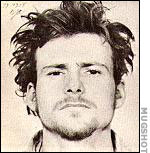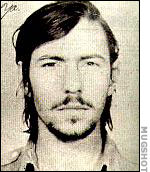On 5 October 1970, armed FLQ gunmen kidnapped a British diplomat named James Cross. On 10 October, several men from a second FLQ cell found Quebec cabinet minister Pierre Laporte throwing a football on his front lawn with his children. Armed with machine guns, they dragged him into a car and held him captive at a home in suburban Montreal. And yet, despite a decade of violence, the federal and Quebec governments were unprepared for this escalation.

The police organized one of the largest manhunts in Canadian history, carrying out nearly a thousand raids and arresting, questioning, and then releasing about fifty people. When the provincial government balked at submitting to the terrorists’ demands, which included releasing “political” prisoners and sending the kidnappers themselves to Cuba or Algeria with an armload of gold bullion, another FLQ cell kidnapped Pierre Laporte, the provincial minister of labour, on 10 October. Suddenly, the FLQ seemed capable of organized and coordinated action that threatened the government (in fact, the second kidnapping was not planned in advance, and each cell acted independently). On 12 October, the military began patrolling the streets of Ottawa.
A crisis atmosphere was palpable in Quebec and, through the media, across the country. While Prime Minister Pierre Trudeau and his cabinet chafed at Quebec premier Robert Bourassa’s apparent intransigence, rumours spread that a group of prominent Quebeckers was setting up a provisional government to replace Bourassa. The stories seemed to acquire some credibility when, on 14 October, sixteen “eminent personalities” — including leading figures in Quebec media, politics, academia, and the labour movement — called a press conference to demand that the government negotiate with the FLQ (René Lévesque began the conference by declaring that “Quebec no longer has a Government”). Peter C. Newman, who had broken the provisional government story in the Toronto Star, would later claim in his 2004 autobiography that Trudeau fabricated the rumour to help justify the use of emergency powers.

Meanwhile, federal economic expansion minister Jean Marchand frantically warned his cabinet colleagues about potential rebellion and informers in the police. On 15 October 1970, three thousand people crowded into Paul-Sauvé arena in Montreal, chanting pro-FLQ slogans. At l’Université de Montréal, more than a thousand students attended a speech by Pierre Vallières and signed a petition in support of the FLQ Manifesto. While the Quebec government negotiated with an FLQ lawyer, Robert Lemieux, military reinforcements poured into the province, and by the night of 15 October, six thousand troops were stationed in Montreal. Soldiers lined the streets of the city and patrolled government buildings. The newly opened Université de Québec à Montréal was shut down the next day in the midst of violent student protests. Desperate to find a solution, Bourassa and Montreal mayor Jean Drapeau wrote to Trudeau on 16 October, insisting that an insurrection was under way and calling on Ottawa to intervene. The federal government responded with the imposition of the War Measures Act. The next day, Pierre Laporte was found in the trunk of a car, murdered by the FLQ.
